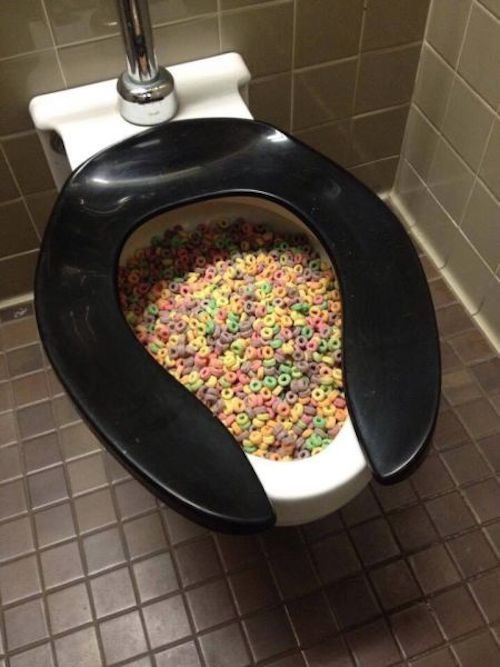Are You Permitted to Dispose of Food Waste in the Toilet?
Are You Permitted to Dispose of Food Waste in the Toilet?
Blog Article
The author is making a number of good points about Is it safe to flush food (especially rice) down the toilet? overall in the article down the page.

Introduction
Many people are typically confronted with the dilemma of what to do with food waste, especially when it concerns leftovers or scraps. One typical question that arises is whether it's all right to flush food down the toilet. In this short article, we'll explore the reasons that individuals could take into consideration flushing food, the effects of doing so, and different methods for correct disposal.
Reasons that people may take into consideration purging food
Absence of awareness
Some individuals may not recognize the possible injury brought on by purging food down the toilet. They might erroneously believe that it's a safe practice.
Comfort
Purging food down the commode might feel like a fast and simple solution to disposing of undesirable scraps, especially when there's no close-by trash bin offered.
Idleness
In some cases, individuals may just pick to flush food out of sheer negligence, without taking into consideration the effects of their activities.
Consequences of flushing food down the commode
Ecological influence
Food waste that ends up in waterways can add to air pollution and damage aquatic environments. Furthermore, the water made use of to flush food can stress water resources.
Plumbing concerns
Purging food can bring about stopped up pipes and drains, causing costly plumbing fixings and troubles.
Types of food that must not be flushed
Fibrous foods
Foods with coarse appearances such as celery or corn husks can obtain entangled in pipes and cause blockages.
Starchy foods
Starchy foods like pasta and rice can take in water and swell, resulting in obstructions in pipes.
Oils and fats
Greasy foods like bacon or cooking oils ought to never ever be purged down the bathroom as they can strengthen and create obstructions.
Correct disposal techniques for food waste
Utilizing a garbage disposal
For homes geared up with waste disposal unit, food scraps can be ground up and purged through the plumbing system. Nevertheless, not all foods are suitable for disposal in this way.
Recycling
Specific food packaging products can be reused, minimizing waste and reducing ecological impact.
Composting
Composting is an environment-friendly way to take care of food waste. Organic products can be composted and utilized to enrich dirt for horticulture.
The relevance of appropriate waste management
Minimizing ecological injury
Proper waste monitoring techniques, such as composting and recycling, help lessen pollution and preserve natural deposits for future generations.
Protecting pipes systems
By preventing the method of flushing food down the toilet, property owners can protect against costly plumbing repairs and keep the integrity of their plumbing systems.
Final thought
In conclusion, while it might be appealing to flush food down the bathroom for benefit, it is necessary to recognize the prospective repercussions of this action. By adopting correct waste monitoring methods and disposing of food waste sensibly, individuals can contribute to much healthier plumbing systems and a cleaner environment for all.
FLUSH FOOD DOWN THE TOILET?
FLUSHING FOOD CAN CAUSE BLOCKED DRAINS IN YOUR HOME
All of the plumbing fixtures in your home are connected to the same sewer pipe outside of your home. This outdoor sewer pipe is responsible for transporting all the wastewater from your home to the Council sewer mains. Even small pieces of food that go down the kitchen sink can cause problems for your sewer. It should therefore be obvious that flushing larger bits of food, such as meat, risks a clog in either the toilet itself or the sewer pipes. Flushing greasy food is even more problematic because oil coagulates when it cools, coating the interior lining of your pipes.
THE TOILET IS NOT A BIN
Food isn’t the only thing that people shouldn’t be flushing down the toilet. People use the toilet to dispose of all kinds of things such as tampons, makeup wipes, dental floss, kitty litter and even underwear. Water goes to great lengths to educate residents about the high costs and stress placed on wastewater treatment systems simply from people flushing the wrong stuff down the toilet. It costs taxpayers millions of dollars each year, and homeowners thousands in blocked drain repairs.
FLUSHING FOOD IS A WASTE OF WATER
Flushing food is a waste of our most precious resource - water. In June this year Level 1 water restrictions were introduced to protect water supply from drought conditions. Much of New South Wales continues to be affected by prolonged drought with recent figures revealing up to 97 per cent of the state remains in drought. Depending on whether you have a single or dual flush toilet, every single flush uses between five and 11 litres of water. In the current climate this is a huge amount of water to be wasting on flushing food that should be placed in the bin (or better yet, the compost).
https://www.jabplumbingsolutions.com.au/blog/can-you-flush-food-down-the-toilet

As a passionate person who reads about , I figured sharing that excerpt was really useful. Be sure to pause to distribute this article if you enjoyed reading it. Thanks so much for going through it.
Estimate Report this page